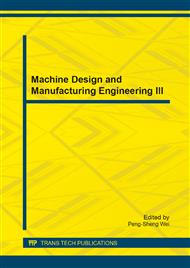p.755
p.759
p.764
p.768
p.774
p.778
p.782
p.786
p.791
Comparison between Waveform and Bug Path Planning Algorithm for Mobile Robot
Abstract:
Mobile robots frequently find themselves in a circumstance where they need to find a trajectory to another position in their environment, subject to constraints postured by obstacles and the capabilities of the robot itself. This study compared path planning algorithms for mobile robots to move efficiently in a collision free grid based static environment. Two algorithms have been selected to do the comparison namely wavefront algorithm and bug algorithm. The wavefront algorithm involves a breadth-first search of the graph beginning at the goal position until it reaches the start position. The bug algorithm uses obstacles borders as guidance toward a goal with restricted details about the environment. The algorithms are compared in terms of parameters such as execution time of the algorithm and planned path length by using Player/Stage simulation software. Results shown that wavefront algorithm is a better path planning algorithm compared to bug algorithm in static environment.
Info:
Periodical:
Pages:
774-777
Citation:
Online since:
July 2014
Authors:
Keywords:
Price:
Сopyright:
© 2014 Trans Tech Publications Ltd. All Rights Reserved
Share:
Citation:


